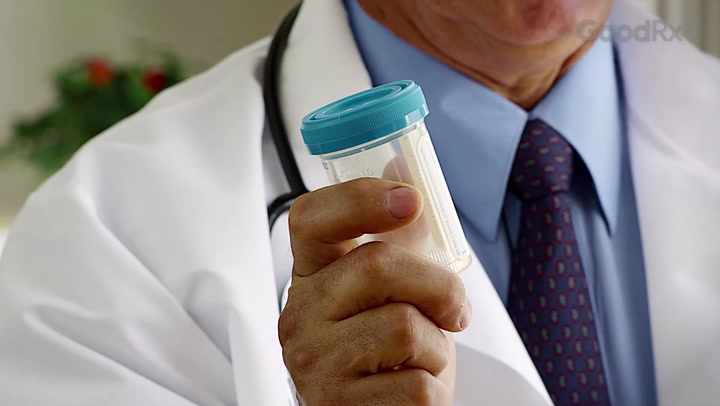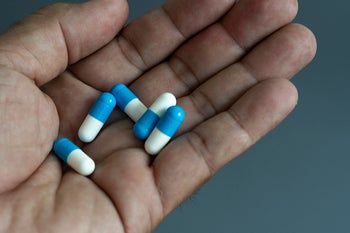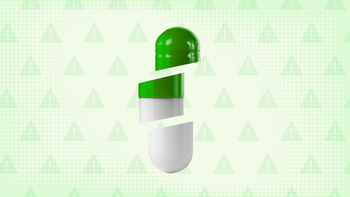
Celexa vs. Lexapro for Depression
Key takeaways:
Celexa (citalopram) and Lexapro (escitalopram) are FDA-approved to treat depression. Lexapro is also approved to treat anxiety.
Celexa and Lexapro are in the same medication class, and work in similar ways. But some studies have found that Lexapro works better for depression symptoms.
Celexa and Lexapro have similar side effects, including trouble sleeping, nausea, and problems with ejaculation.

Mental health conditions like depression are experienced worldwide. In fact, about 16% of people will experience depression at some point in their life. Formally known as major depressive disorder (MDD), depression can have both mental and physical effects.
Fortunately, depression is treatable. And most people will feel at least some relief from their symptoms if they seek treatment. Treatment options include psychotherapy and antidepressant medications.
Selective serotonin reuptake inhibitors (SSRIs) are the most commonly prescribed antidepressants. They’re a first-choice option for depression. Here, we’ll focus on two SSRIs: Celexa (citalopram) and Lexapro (escitalopram). These medications have similarities, but they have important differences, too.
Search and compare options
Here, we’ll take a closer look at how Celexa and Lexapro compare.
What is Celexa?
Celexa is an SSRI that comes as oral capsules, tablets, and a liquid solution. The following dosages are available:
Capsules: 30 mg
Tablets: 10 mg, 20 mg, 40 mg
Liquid solution: 10 mg per 5 mL
What health conditions does Celexa treat?
Celexa is only FDA-approved to treat depression in adults. But it’s also used off-label for other mental health conditions, like panic disorder and obsessive-compulsive disorder (OCD).
What is Lexapro?
Like Celexa, Lexapro is an SSRI. It comes as 5 mg, 10 mg, and 20 mg tablets. It also comes as a liquid solution (5 mg per 5 mL).
What conditions is Lexapro approved to treat?
Lexapro is FDA-approved to treat depression in adults and children, 12 years and older. It’s also approved to treat anxiety in adults, and it’s used off-label for many mental health conditions including post-traumatic stress disorder and premenstrual dysphoric disorder.
Read more like this
Explore these related articles, suggested for readers like you.
How do SSRIs work for depression?
SSRIs are thought to work by raising the level of a chemical in the brain called serotonin. SSRIs may also help the brain process serotonin more effectively.
Serotonin is a type of neurotransmitter (chemical messenger). Neurotransmitters allow each nerve cell in your brain to communicate with the next nerve cell. This allows your brain to help you do things like feel emotions, learn new things, and move your body.
Serotonin is important for mood regulation. If you have depression, medications that raise your serotonin level can help relieve depressive symptoms.
Besides raising serotonin, research suggests that SSRIs also raise the amount of brain-derived neurotrophic factor (BDNF). BDNF is a brain protein that’s probably involved in mood regulation. Raising the activity of BDNF may improve depression symptoms.
How are Celexa and Lexapro dosed?
Celexa and Lexapro are usually taken once a day at any time of day. Both medications can be taken with or without food. If either medication makes it difficult for you to sleep, taking it in the morning may help.
The starting dose of Celexa is usually 20 mg daily. If needed, the dose can be raised after a week. The maximum dose is 40 mg. Doses higher than 40 mg aren’t recommended because they can cause more heart-related side effects and typically don’t offer further benefit.
The starting dose of Lexapro for depression is usually 10 mg daily. The dose can be raised to 20 mg after a week in adults or after 3 weeks in adolescents. The 20 mg dose hasn’t been shown to be more effective for depression than the 10 mg dose.
Is Celexa or Lexapro better at treating depression?
Both Celexa and Lexapro are effective at improving symptoms of depression. But, studies have shown that Lexapro might be better than Celexa at treating depression.
A 2011 meta-analysis of nine studies compared the two medications. A meta-analysis examines the results of multiple studies and is considered high-quality scientific evidence. Over 2,000 people were studied. The results showed that Lexapro was better than Celexa at improving symptoms of depression. People who took Lexapro were also more likely to experience remission (feeling free of depression symptoms).
Even though studies show that Lexapro might be more effective than Celexa, both medications are still good options for depression. Which medication you choose might come down to certain factors. For example, Lexapro can be used in children 12 years of age and older, but Celexa is only FDA-approved for depression in adults. Celexa is also more likely to prolong the QT interval (which can lead to heart rhythm problems).
If you’re taking Lexapro or Celexa and it’s not working, or it’s causing side effects, talk to your healthcare provider. They might recommend switching to another SSRI or another type of antidepressant.
What are the side effects of Celexa and Lexapro?
Celexa and Lexapro share some of the same side effects. Below, we’ll list some of the most common side effects.
| Side effect | Celexa | Lexapro |
|---|---|---|
| Dry mouth | 20% | 6% |
| Sweating | 11% | 5% |
| Nausea | 21% | 15% |
| Diarrhea | 8% | 8% |
| Tiredness | 5% | 5% |
| Difficulty sleeping | 15% | 9% |
| Drowsiness | 18% | 6% |
| Ejaculation problems | 6% | 9% |
| Nasal symptoms (congestion, runny nose) | 5% | 5% |
| Dizziness | Rare | 5% |
| Tremor | 8% | Rare |
What are serious side effects of Celexa and Lexapro?
All SSRIs, including Celexa and Lexapro, have a boxed warning about the risk of suicidal thoughts and behaviors. Boxed warnings are the strictest warning the FDA can give a prescription medication. The risk is higher if you’re younger than 25 years old.
Serious side effects from Celexa and Lexapro aren’t common, but they can happen. Some of these risks include:
Higher risk of bleeding
Excessively high levels of serotonin (serotonin syndrome)
Withdrawal symptoms when stopping the medication (discontinuation syndrome)
Abnormal heart rhythm (risk may be higher with Celexa, especially at doses higher than 40 mg per day)
Low sodium levels (may be more likely with Celexa)
Manic episodes (intense feelings of energy) in people with bipolar disorder
Celexa may also cause seizures in rare cases. This is usually with doses that are higher than what’s recommended. And, it may be more common if you have a history of seizures.
What interactions do Celexa and Lexapro have?
Celexa and Lexapro can both have drug interactions, but they’re not very common. Still, it’s important to be aware of them.
Certain enzymes, called cytochrome P450 (CYP) enzymes, help break down (metabolize) medications in the body. Sometimes, multiple medications you take might be metabolized by the same enzyme. This is one way drug interactions can occur.
Celexa and Lexapro are mostly metabolized by CYP3A4 and CYP2C19 enzymes. Other medications that also affect these enzymes can impact levels of Celexa and Lexapro in the body, which can be dangerous. Examples include omeprazole (Prilosec) and cimetidine (Tagamet HB).
As discussed above, Celexa and Lexapro can make bleeding, serotonin syndrome, and abnormal heart rhythms more likely. And when combined with other medications that have the same risks, the added effects can overwhelm the body. For this reason, Celexa and Lexapro may interact with:
Medications that raise serotonin levels: other antidepressants, like monoamine oxidase inhibitors (MAOIs) and tricyclic antidepressants (TCAs)
Medications that raise your risk of bleeding: nonsteroidal anti-inflammatory drugs (NSAIDs) and anticoagulants (blood thinners)
Medications with the potential to change your heart rhythm: some antipsychotics and methadone (Methadose)
It’s also best to avoid medications and substances that can cause more drowsiness, like benzodiazepines and alcohol.
Always remember to provide a current medication list to your healthcare provider and pharmacist. They can double check for interactions and provide you with the best advice.
How much do Celexa and Lexapro cost?
Celexa and Lexapro are available as brand-name and generic medications. A 30-day supply of generic Celexa 20 mg is about $16. But with a free GoodRx coupon, you may be able to find it for less than $6.
A 30-day supply of generic Lexapro 10 mg is about $50. A GoodRx coupon can drop the price to about $7 in certain locations.
Can you take Celexa and Lexapro together?
No. These medications work in the same way to treat depression and other mental health conditions. Taking them together is risky because more side effects can occur.
If your symptoms of depression aren’t relieved by your current medication, talk to your healthcare provider about raising your dose or switching to another antidepressant.
The bottom line
Celexa and Lexapro are antidepressants that can treat depression and other mental health conditions. They’re in the same medication class called SSRIs. Some studies have found that Lexapro works better for depression symptoms, but you should always talk to your healthcare provider about which medication is best for you.
If you or someone you know has had thoughts of harming themselves or taking their own life, know that help is available. The National Suicide Prevention Lifeline (1-800-273-8255) provides 24/7, free, confidential support for people in distress, as well as best practices for professionals and resources to aid in prevention and crises.
Why trust our experts?



References
American Psychological Association. (2019). APA clinical practice guideline for the treatment of depression across three age cohorts.
Casarotto, P. C., et al. (2021). Antidepressant drugs act by directly binding to TRKB neurotrophin receptors. Cell.
Cascorbi, I. (2012). Drug interactions--principles, examples and clinical consequences. Deutsches Ärzteblatt International.
Endocrine Society. (2022). Brain hormones.
Food and Drug Administration. (2017). FDA drug safety communication: Revised recommendations for Celexa (citalopram hydrobromide) related to a potential risk of abnormal heart rhythms with high doses.
GBD 2015 Disease and Injury Incidence and Prevalence Collaborators. (2016). Global, regional, and national incidence, prevalence, and years lived with disability for 310 diseases and injuries, 1990-2015: A systematic analysis for the Global Burden of Disease Study 2015. Lancet.
Guy-Evans, O. (2021). Neurotransmitters: Types, function and examples. SimplyPsychology.
Hill, T., et al. (2015). Antidepressant use and risk of epilepsy and seizures in people aged 20 to 64 years: Cohort study using a primary care database. BMC Psychiatry.
Leth-Møller, K. B., et al. (2016). Antidepressants and the risk of hyponatremia: A Danish register-based population study. BMJ Open.
Lupin Pharmaceuticals. (2022). Escitalopram [package insert].
Montgomery, S., et al. (2011). Efficacy of escitalopram compared to citalopram: A meta-analysis. International Journal of Neuropsychopharmacology.
Murphy, L. R., et al. (2018). QT prolongation and antidepressants. Psychiatric Times.
National Suicide Prevention Lifeline. (n.d.). National suicide prevention lifeline.
Pompili, M., et al. (2010). Antidepressants and suicide risk: A comprehensive overview. Pharmaceuticals.
Proficient Rx LP. (2022). Citalopram [package insert].
Rosebaum, P. H., et al. (n.d). Chapter 14: Citalopram and Escitalopram. Textbook of Psychopharmacology.
Shoar, S. N., et al. (2022). Citalopram. StatPearls.
The College of Psychiatric and Neurologic Pharmacists. (2020). Escitalopram (Lexapro). National Alliance on Mental Illness.
Torres, F. (2020). What is depression? American Psychiatric Association.





























